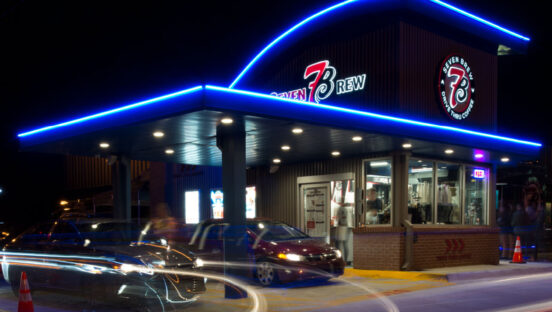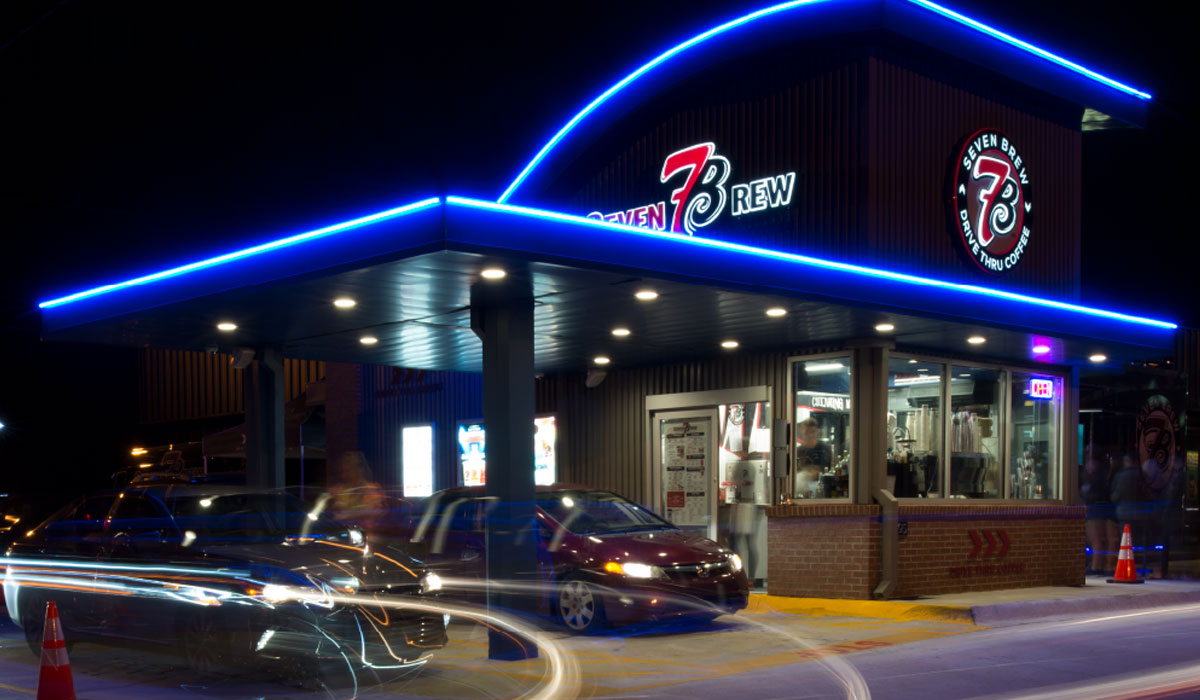As the coronavirus swept through nations and brought a rush of lockdowns, drive-thru fast food chains emerged as heroes. During these trying times, the decades-old drive-thru service proved its worth, with fast food restaurant managers even called upon to provide their expertise for drive-thru COVID-19 testing and vaccinations.
While sit-down eateries’ doors shuttered, fast food chains simply closed their dine-in space and flourished with drive-thru orders exclusively. In fact, making 100 percent of sales through drive-thru service worked out perfectly fine amid mandates for dine-in fast food closures. These chains remained profitable while employees stayed a safe distance from customers and each other in the kitchen.
The pandemic’s influence on food service highlighted how unnecessary sit-down eating is in fast food—so much so that fast food chains are rethinking their plans to reopen their dining spaces under any circumstances.
Is Dine-In Fast Food a Thing of the Past?
There’s a practical reason why consumers prefer drive-thru fast food — convenience. Drivers can just roll down their windows, place their order, pay and zip away with a hot meal in a matter of minutes. Even unlikely chains steering clear of the fast food label have embraced the drive-thru, from Starbucks to Panera Bread and Panda Express.
In reality, the need for dine-in fast food is becoming a thing of the past with more choices for drive-thru service. Whereas some generations would spend time eating inside these restaurants, fewer people do now. This is partly due to fast food chains choosing not to reopen their dine-in space—but why is that?
A considerable component of reformatting fast food service is labor shortages. According to the National Restaurant Association, despite a recent uptick in hospitality employment, the food service industry was still down 794,000 jobs in April 2022—about 6.4 percent below what it was before the pandemic.
The restaurant industry isn’t exactly notorious for its wages, benefits, and workplace conditions. Currently, owners are grappling with offering higher pay to hire and retain employees. They have to decide what’s more important for their bottom line without staff available to allocate toward drive-thru services and maintaining dine-in areas. As a result, the drive-thru has proven its value and popularity.
The End of Dine-In Space is Changing the Drive-Thru
The influx of fast food establishments choosing not to reopen for dine-in eating has ultimately changed the drive-thru experience. Consumers craving a Big Mac and French fries might be surprised to see some of the changes at play.
Drive-Thru Only
With fast food dine-in deemed obsolete, chains are developing the blueprint for the future of fast food service. Recently, a new Taco Bell in Las Vegas opened at a much smaller location than other chain establishments across the country, offering drive-thru service only.
Of course, one of the benefits of transitioning exclusively to drive-thru service is paying for a smaller footprint—fewer people indoors require less commercial space. By contrast, fast food chains can focus less on catering to a few patrons trickling in and instead aim to improve the efficiency and accuracy of drive-thru services.
According to a recent QSR magazine Drive-Thru Study, those two components matter most to consumers purchasing fast food—89 percent of respondents named accuracy as somewhat or the most important, with the speed of service at 88 percent. Additionally, 75 percent of respondents stated convenience was their primary reason for visiting the drive-thru.
Multiple Drive-Thru Lanes
Eliminating fast food dine-in space means optimizing the drive-thru experience with fewer idling cars. Finding a way to cater to customers who use mobile ordering also requires consideration in terms of fast pick-up. As a result, multiple drive-thru lanes are becoming the new norm, with consumers likely seeing the widespread adoption of this format shortly.
Fast casual chains like Panera Bread traditionally utilize counter ordering and assembly preparation stations to serve their patrons. At many locations, food is delivered to customers wherever they’ve chosen to sit.
However, even Panera Bread has integrated a dual drive-thru concept — one lane for new orders and a separate lane for their Rapid Pick-Up service. The change came as Panera Bread has shifted gears toward an enhanced digital guest experience concentrating on contactless dining and delivery, ordering kiosks and a fully digitized menu.
However, Panera Bread isn’t the only restaurant exploring multiple drive-thru lanes. McDonald’s has long implemented dual ordering lanes, while other fast food establishments are trying three and four lanes to meet demands and provide better customer service.
Ghost Kitchens
Fast food restaurant owners know operating successful ghost kitchens require savvy planning, but it’s a risk many chains seem willing to take. Following the coronavirus pandemic and the rise of third-party delivery apps like GrubHub, DoorDash and UberEats, some fast food establishments are converting to these kitchens to satisfy off-site dining demands.
There’s no storefront, dining room or front-of-house staff in a ghost kitchen. Instead, a team works solely to fulfill online orders requiring delivery—space gets rented to prepare food orders made through third-party apps.
The adoption of ghost kitchens isn’t new, as Chick-fil-a has experimented with it before. More recently, Wendy’s has embraced the idea with plans to open 700 ghost kitchens in the United States, Canada, and the United Kingdom by 2025.
Dine-In Space Might Never Be the Same
There will likely be a handful of consumers who are sad to see dine-in fast food meet its demise—particularly those who utilized the restaurants to socialize or take a break from everyday life. However, the times dictate change. While dine-in space may no longer be available at some establishments, the outcome will be improved drive-thru service.
Emily Newton is the Editor-in-Chief of Revolutionized Magazine. She has over five years experience writing for the food and beverage industry.








